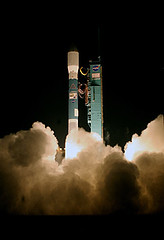Science Mythbusting
Monday, May 1st, 2006Over on Newsvine, I came across an interesting post by someone who claims to be busting the myths about science, and found a couple of interesting items on the list.
Myth 2. The Great Wall of China is the only manmade structure visible from space
There are several variations on this folkloric statement, and they’re all quantifiably false. Astronauts can spot the Great Wall from low-Earth orbit, along with plenty of other things like the Giza pyramids and even airport runways. But they can’t see the Wall from the Moon.
…
Myth 12. There is no gravity in space
Blame the term "zero-gravity" for this common misconception. Gravity is everywhere, even in space. Astronauts look weightless because they are in continuous freefall towards the Earth, staying aloft because of their horizontal motion. The effect of gravity diminishes with distance, but it never truly goes away. It is also untrue that space is a vacuum. There are all kinds of atoms out there, albeit sometimes far apart.
I don’t know about the gravity question (any physicists out there?), but apparently our mythbuster is dead on about the Great Wall.
“You can see the Great Wall,” Lu says. But it’s less visible than a lot of other objects. And you have to know where to look.
In fact stretches of the wall aren’t even visible from China. They’ve been buried by sand for centuries. NASA has used space-based radar to map out hidden parts of the ancient structure. [Astronaut Ed] Lu is trying to get a picture of it, too, with a digital camera.
I don’t know if Lu every got his picture, but I did track down the pictures NASA took with its "space-based radar."
The mythbuster also takes on some common myths about asteroids.



